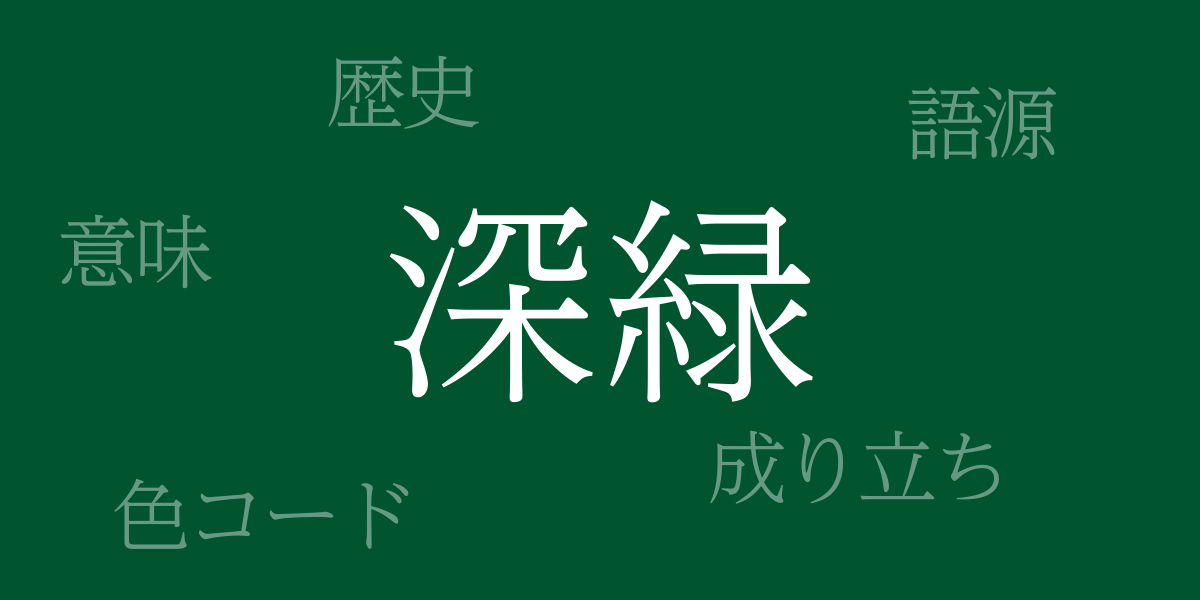Deep green (深緑, ふかみどり), reminiscent of a forest wrapped in silence, is one of the colors symbolizing the four seasons of Japan. This color has captivated the hearts of the Japanese people for centuries and has been treasured in clothing and art. This article explores the serene beauty of deep green, uncovering its allure, history, color codes, and its international recognition.
About Deep Green (深緑)
Deep green (深緑), also known as ‘mokushoku’ in Japan, is a color that embodies the rich greenery of nature. It evokes a sense of tranquility and vitality, leaving a profound impression on those who see it. Deep green stands out especially when contrasted with brighter colors, making it a favored choice in design and fashion circles.
The History of Deep Green
The use of deep green in Japan can be traced back to the Heian period when nobles adorned themselves in garments of this color while enjoying their nature-inspired gardens, appreciating the seasonal transformations. It was also used in samurai armor and banners, symbolizing bravery and dignity. Over time, deep green has been incorporated into a wide range of traditional crafts, including Japanese paintings and ceramics, establishing its status as a traditional Japanese color.
Color Codes for Deep Green
In digital design and web production, accurate color reproduction is crucial. Below are the color codes representing deep green:
- HEX: #00552E
- RGB: R:0 G:85 B:46
- CMYK: C:91 M:55 Y:100 K:27
Western Name for Deep Green
In English, deep green is commonly referred to as ‘Forest Green.’ This name aptly reflects the dense green hues of a forest, evoking images of lush woodland. ‘Forest Green’ is widely used in global contexts, including fashion and interior design.
Summary on Deep Green
Deep green continues to carry its historical significance and beauty as a traditional Japanese color. It remains beloved by many today, seamlessly integrating into various aspects of our lives. The calming shade of deep green has the power to soothe the mind and awaken a longing for nature. It will continue to shine as a symbol of Japanese culture across the globe.

























